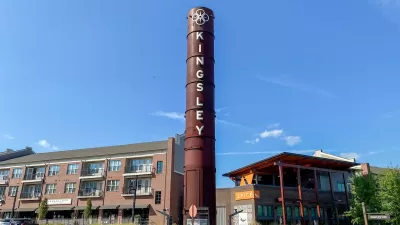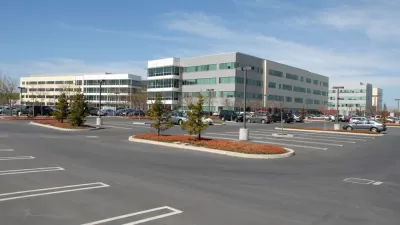Charles Marohn analyzes Lafayette, Louisiana for how well (or poorly) its districts measure up in terms of infrastructure investment versus tax revenues. The results are telling.

After a research effort to determine why the city of Lafayette can't "keep up" with its own maintenance, Charles Marohn gives us a telling visual. "When we finished, we had a three dimensional map showing what parts of the city generated more revenue than expense (in business terms, this would be called profit) and what parts of the city generated more expense than revenue (again, in business terms, this is considered a loss)."
The results back up Marohn's usual thesis: that wanton infrastructure investments in low-slung suburban areas will not pay for themselves. In the long term, they'll run up a deficit.
"There are some remarkable things to note right off the top. When we added up the replacement cost of all of the city's infrastructure -- an expense we would anticipate them cumulatively experiencing roughly once a generation -- it came to $32 billion. When we added up the entire tax base of the city, all of the private wealth sustained by that infrastructure, it came to just $16 billion. This is fatal."
For more, see Marohn's follow-up article, "Poor Neighborhoods Make the Best Investments."
FULL STORY: The Real Reason Your City Has No Money

Alabama: Trump Terminates Settlements for Black Communities Harmed By Raw Sewage
Trump deemed the landmark civil rights agreement “illegal DEI and environmental justice policy.”

Study: Maui’s Plan to Convert Vacation Rentals to Long-Term Housing Could Cause Nearly $1 Billion Economic Loss
The plan would reduce visitor accommodation by 25% resulting in 1,900 jobs lost.

Planetizen Federal Action Tracker
A weekly monitor of how Trump’s orders and actions are impacting planners and planning in America.

Wind Energy on the Rise Despite Federal Policy Reversal
The Trump administration is revoking federal support for renewable energy, but demand for new projects continues unabated.

Passengers Flock to Caltrain After Electrification
The new electric trains are running faster and more reliably, leading to strong ridership growth on the Bay Area rail system.

Texas Churches Rally Behind ‘Yes in God’s Back Yard’ Legislation
Religious leaders want the state to reduce zoning regulations to streamline leasing church-owned land to housing developers.
Urban Design for Planners 1: Software Tools
This six-course series explores essential urban design concepts using open source software and equips planners with the tools they need to participate fully in the urban design process.
Planning for Universal Design
Learn the tools for implementing Universal Design in planning regulations.
Caltrans
Smith Gee Studio
Institute for Housing and Urban Development Studies (IHS)
City of Grandview
Harvard GSD Executive Education
Toledo-Lucas County Plan Commissions
Salt Lake City
NYU Wagner Graduate School of Public Service





























